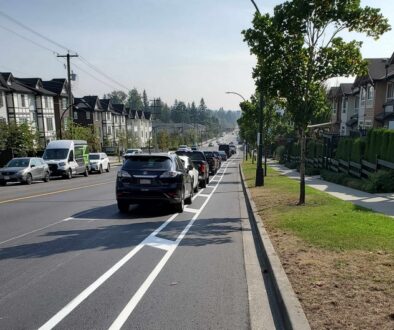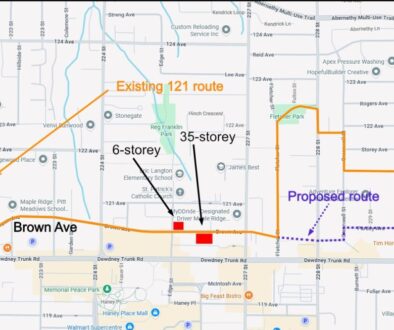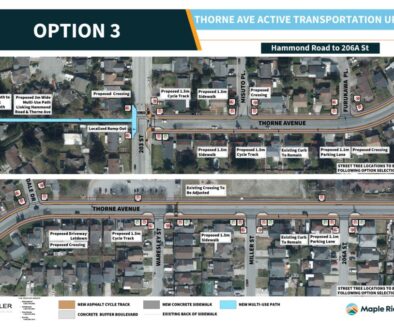Are Complete Streets Incomplete?
At several all-candidates meetings in the last few weeks, the term “Complete Streets” was mentioned. When engineers design Complete Streets, they consider the needs of all users: pedestrians, wheelchair users, cyclists, transit, and cars. On some streets with low traffic volumes and speeds cyclists can share the road with cars, on other streets bike lanes with or without separation – such as a barrier or a strip of grass – might be prefered. Other treatments might be
- “bulb-outs”, extentions of the sidewalk at intersections, which make the distance to cross for pedestrians shorter;
- pedestrian signals;
- medians;
- frequent bus stops;
- a bike box at an intersection where frequently cyclists need to make a left turn. This is a space – usually painted green – in front of the stop line for cars at a traffic light, where cyclists can wait until the light turns green, so that they more easily make the left turn.
Over 300 jurisdictions in the United States (the states of Oregon, California, Illinois, North Carolina, Minnesota, Connecticut, and Florida, as well as numerous cities) have adopted some form of Complete Street policy. In Canada, so far only one municipality, namely Waterloo (Ont.), adopted such a policy. Complete Streets improve safety, encourage cycling and walking, improve livability, improve health, can lower transportation costs, and give people more choice of transportation.
There’s more to designing streets/neighbourhoods/communities than just incorporating these kinds of elements though. Read this article from “Project for Public Spaces”.


